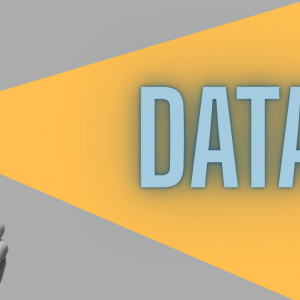Razor-thin operating margins are nothing new for healthcare organizations, although the pandemic did exacerbate the situation. The National Hospital Flash Report from Kaufman Hall found that actual operating margins for March 2022 were -3.45% – up from January but still far below sustainable levels – while gross operating revenue declined by 7.4% and outpatient revenue by 5% from just two months earlier. Inpatient revenue suffered the most, dropping more than 19% in March after increasing by 3% the month prior.
Not much is expected to change in the near term. In late 2021, the American Hospital Association (AHA) and Kaufman Hall projected hospitals would end the year with a loss of $54 billion in net income and two-thirds would maintain negative operating margins.
“Healthcare organizations are under pressure on many fronts, including their financial viability. Amid this pressure, revenue optimization, integrity, and total compliance are crucial,” notes analyst Mike Davis in a recent First Look report on MDaudit from KLAS Research.
Hoping to relieve some of those pressures, many healthcare organizations are turning to revenue cycle management (RCM) audit solutions that promise to staunch the flow of delayed and denied claims and protect against losses due to negative audit findings. But not all RCM audit solutions are created equal.
Do the Homework
“An RCM environment supporting both fee-for-service and value-based care models requires focused, timely evaluations of billing practices and compliance risk for professional and hospital billing,” Davis wrote, adding that audit solutions should support both professional and hospital billing. He further noted that “audits for professional billing and compliance risk assessments may vary widely relative to specialties and their billing data.”
In general, Davis identified flexibility for uploading and normalizing billing data from various RCM systems as a key component driving adoption of audit solutions and their ability to achieve expected outcomes. Reporting and analytics requirements also necessitate solutions with “high degrees of flexibility for data comparisons,” and training environments that support on-site and virtual options and feature online libraries of curriculums and documents.
In addition to those attributes, anyone in the market for RCM audit solutions should take the time to fully vet prospective partners by asking a few key questions:
- How does the vendor integrate data? Most vendors claim their process is seamless and mostly automated. But the reality is that most are primarily manual and dependent upon spreadsheets. It’s also not uncommon for data to be updated only sporadically. In addition to ensuring processes are truly automated, healthcare organizations should verify that a vendor has back-end processes that can identify and resolve any errors – rather than putting that burden back on the customer.
- How can I make sure my data is secure? Data breaches too frequently frame today’s headlines, and no healthcare organization wants to face the cost and reputational fallout that results from these mishaps, so it’s important to have a clear understanding of a vendor’s security standards. Look for a company that holds HITRUST CSF Certification, which means they have demonstrated a proactive approach to data protection and risk mitigation.
- Will the vendor help with implementation? A true vendor partnership is defined by an ongoing relationship that ensures technology is optimized to deliver the greatest return on investment. This includes ongoing training and guidance during and after implementation. In fact, client organizations should expect to be assigned a client success manager who performs routine check-ins to ensure the product is working smoothly.
Davis also emphasizes the importance of providing governance to ensure ongoing audit value and compliance accuracy. Original build workflows and data sets are likely to change over time, necessitating reviews related to new data, RCM file uploads, and upload frequency. “Additionally, organizations will need to create the necessary data mapping to ensure accurate analytics. System upgrades may drive these governance review timelines, but reviews should take place annually,” he adds.
MDaudit Makes the Grade
In terms of how MDaudit stacked up against competitors, the KLAS First Look report gave both high marks. Davis highlighted the platform’s ability to address the needs of multiple teams – billing, compliance, revenue cycle, etc. – with a single enterprise platform to mitigate compliance and revenue risk. “The solution,” he wrote, “addresses key areas such as continuous risk monitoring, anomaly detection, and workflow automation.
MDaudit users surveyed by KLAS for the report were equally bullish. Out of the 95% who indicated they were satisfied with the platform, 74% were highly satisfied. Among key performance indicators, MDaudit received a grade of A for its ability to support implementation goals and the likelihood of recommending the solution to others – with 94% indicating they would purchase the platform again. Top grades were also given for overall satisfaction, product quality, phone/web support, and its ability to drive tangible outcomes, including efficiency in the auditing process, improved financials, and reduced reliance on manual processes.
Concludes David: “MDaudit is a compelling solution for all providers to consider because of the ability to perform billing audits, compliance risk reviews, and prospective billing reviews that result in improved financial outcomes of less than six months. MDaudit receives good marks for their customer service and training programs and provides a flexible analytics solution to effectively evaluate RCM operations.”
Click to review the complete report or request a demo below to see for yourself how MDaudit can support your organization.






